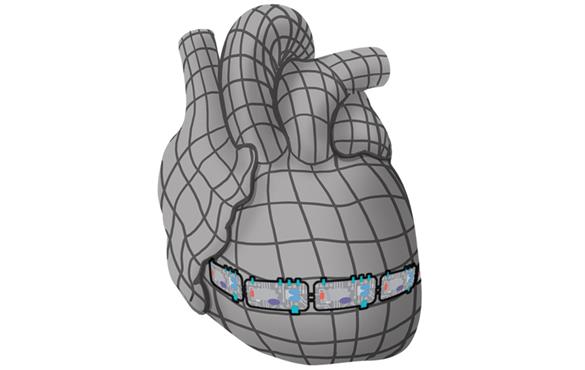New model of irregular heartbeat could boost drug efficacy
Jon Silva and his team used a computational model to determine a way for a drug for irregular heartbeats to work more effectively

Patients with irregular heartbeats, or arrhythmia, have few effective treatment options — available drugs are not always effective, and implanted defibrillators can be too aggressive.
Jonathan Silva, a biomedical engineer in the McKelvey School of Engineering at Washington University in St. Louis, has developed the first computational model that shows the molecular groundwork of a popular drug's effectiveness in a variety of ways.
The findings are published in the Journal of the American College of Cardiology: Basic to Translational Science October 2019 issue.
Current treatment for arrhythmia is the drug mexiletine, which is designed to block extra current that travels through the sodium channel in the heart that causes it to beat too fast or irregularly. However, the drug is not effective for every patient, though researchers are not clear why. Silva's new model provides some answers.
"What we found is that the drug doesn't work because part of the channel is getting in the way," said Silva, associate professor of biomedical engineering. "What this study allowed us to do is use a computational model to give us insight to see if we pull that part (of the channel) out of the way, then the drug can come in and do its job."
The team used a model with two genetic mutations that cause arrhythmia in patients with long QT type 3 syndrome. One of the mutations, R1626P, allows the mexiletine to bind to the Domain III voltage-sensing domain, while the other, M1652R, impedes the drug's access to the channel and makes the channel insensitive to the drug.
Silva's team is the first to use mathematical equations that show how the movements in the sodium channel open and close and how those movements control where the drug blocks. Their model showed that this shift in the voltage sensing domain is critical for the drug to be effective.
"That mathematical description at the molecular level then lets us take that and put it into a higher-level model and understand how those molecular movements affect the channel opening and closing, as well as how the myocyte fires, how the arrhythmia happens and how drugs can prevent an arrhythmia," Silva said.
Silva and the team then put the model into practice to develop another model of a "booster" that made mexiletine perform better at reducing the amount of current coming through the sodium channel, even in the genetic mutation that does not allow the drug to work. Theoretically, administering this booster along with the drug to patients with arrhythmia would reduce or even stop the arrhythmia triggers.
Silva said the findings extend beyond patients with Long QT Syndrome to patients with arrhythmias from other causes.
"We propose that combination therapy with common pore blockers, enhanced by allosteric channel modulation could dramatically alter the landscape for antiarrhythmic therapy by adding an additional dimension to the parameter space of drug efficacy," Silva said. "This would expand the number of patients who would receive clinical benefit from existing therapeutics and allow for a lower concentration of drugs to be used, decreasing off-target side effects."
The work builds on previous research by Silva and his team to investigate the efficacy of mexiletine on patients with Long QT Syndrome Type 3, during which they found that the Domain III voltage-sensing domain was correlated to the drug's effect.
Moreno J, Zhu W, Mangold K, Chung W, Silva J. A molecularly detailed Nav1.5 model reveals a new class I antiarrhythmic target. Journal of the American College of Cardiology: Basic to Translational Science. October 2019, Volume 4, Issue 6. DOI: 10.1016/j.jacbts.2019.06.002
This research was supported by the National Institutes of Health (R01-HL136556 and 5 T32 HL 7081-42).




